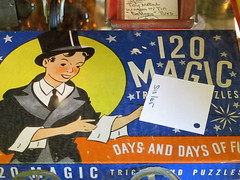I have written
here and
there about TED Talks in the past . I have gotten a lot out of TED Talks, there is a lot of good stuff there - they are also elitist, expensive, and closed in an era where the answer is going to come with opening things up
, but never mind that now! There will soon be a TED Talk crisis. There are over 1400 of them online. Much of the drek, apparently, has been curated out for you by the corporate curators; ideas that are not linked on their site that may not, according to TED, be really worth spreading. This means that there are thousands and thousands that may not have made the cut. How many TED events and talks have to be held to find the ones worth spreading? I imagine a lot. This is the crisis. They are going to be running out of "geniuses" any day now. Pretty soon, ordinary gardeners will have to talk about plants, poets will have to talk about art, and bus drivers will have to give talks on psychology and human nature. Then again, who really knows more about the human psyche than someone who has been driving a bus for 20 years? But the problem is that bus drivers are not educators, corporate presenters, or lifestyle coaches, how will they be able to create an inspirational TED Talk? Fortunately, after much analysis and careful thought and a couple shots of espresso, I have found the formula.
If you want to create your own TED Talk, you only have to follow these six steps 1) Have a vague goal, you don't have time for details; 2) Distract the audience with a non-tangential demonstration; 3) Provide a link to your idea with the latest buzzwords in science; 4) About mid-way give an inspired rhetorical question; 5) Your breathless climax should be a double down on the rhetoric; 6) Finish off with the implication that your audience is what really makes it all possible. How does this work? Here is an example talk:
- Vague goal: You want to cure illiteracy while restoring wonder to the world.
- Non-tangential demonstration: You perform a magic trick you learned once as a child.
- Tenuous scientific link: You claim that the ball that disappeared from your hand and was pulled from an audience member's ear actually represents the quantum foam.
- Inspired rhetorical question: “What if instead of one ball, there were a thousand? Or a million? Or one ball for every illiterate child in the world?”
- Breathless climax: “Okay now imagine two.”
- Finale: “This just goes to show that many large groups of passionate people with unlimited resources can make magic happen.” Bow to thunderous applause. Exit juggling.
Note: For more on form and specific vocabulary,
Stephen Warnicke did a mind-blowingly awesome TED Talk on that.


Very interesting post. Thanks!!!
ReplyDeleteI repost your post in my blog: http://ravellom.blogspot.com/